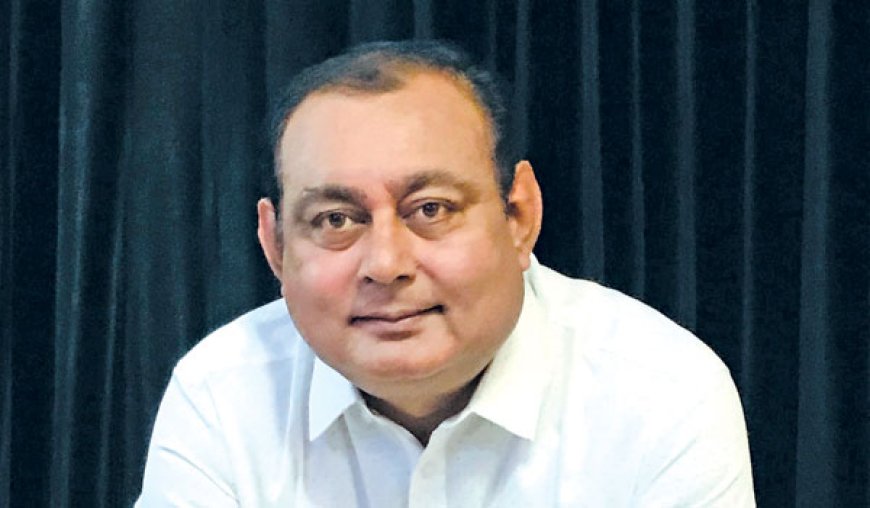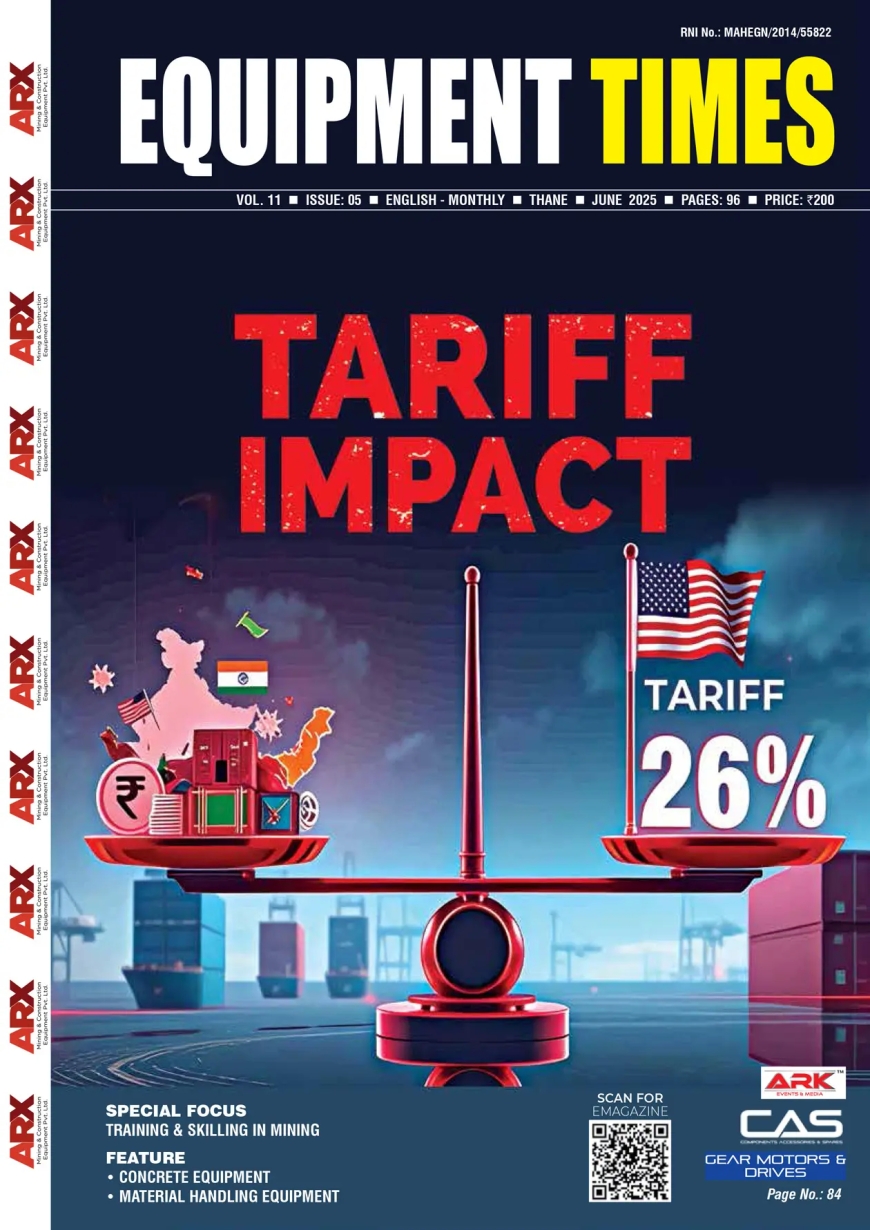The market shows immense promise, primarily driven by the robust expansion of the Indian economy.
Alok Kumar, Associate Director – Sales (Engines), Kohler Power India What is your focus for Excon 2023? Our primary focus areas revolve around a broad spectrum, primarily driven by regulatory considerations. Foremost among these is our commitment to advancing green

Alok Kumar, Associate Director – Sales (Engines), Kohler Power India
What is your focus for Excon 2023?
Our primary focus areas revolve around a broad spectrum, primarily driven by regulatory considerations. Foremost among these is our commitment to advancing green energy. In line with this objective, we are introducing a range of BS5 compliant products tailored for European and American standards. Moreover, aligning with the implementation of BS5 standards in India, these products are poised to cater effectively to the Indian market. Our paramount aim is to offer hassle-free, environmentally conscious solutions to the market. Another cornerstone of our strategy is our longstanding reputation for innovation in diesel engine technology. Keeping this ethos in mind, we’re launching an exceptionally compact engine boasting unparalleled torque capacity—a unique offering within the global diesel engine market.
What are the product launches or on display?
We’re thrilled to unveil our latest lineup featuring four exceptional product ranges. First off, we’re proud to introduce the 18.4-kilowatt Stage 5 engine, available in three distinct versions: naturally aspirated, turbocharged, and turbocharged after cooling. This groundbreaking engine, delivering around 25 horsepower, boasts an unparalleled 90 Newton-meters of torque across all versions, setting a new standard in its class.
Next in line is our 1.9-liter engine, ranging from 36 to 52 kilowatts. Designed to not only meet the stringent Indian BS5 norms but also surpass global standards, this engine represents a pinnacle in performance and compliance.
Innovation takes center stage with our third offering—a hybrid project that seamlessly integrates engine and motor technologies. This high-capacity, high-power solution delivers 54 kilowatts through diesel technology, further augmented by an additional 20 kilowatts from the integrated motor. The result? A remarkably compact engine yielding an impressive 100 horsepower when you need it most.
Last but certainly not least, our 2.5-liter & 3.4-liter engine, pushing up to 112 kilowatts, completes this stellar lineup. Each of these engines is meticulously crafted to meet the forthcoming BS5 norms set to take effect from April 2024, ensuring both compliance and outstanding performance.
We’re excited to present these cutting-edge advancements, setting new benchmarks in power, efficiency, and environmental responsibility.

How do you look at the market in which you are presently in?
The market shows immense promise, primarily driven by the robust expansion of the Indian economy. This growth hinges upon the effective establishment of infrastructural foundations and seamless facilitation provided to contractors, customers, governmental bodies, and road construction companies. This collective effort propels the market forward. Moreover, aligning with the Prime Minister’s forward-looking vision, we anticipate a significantly promising trajectory for market expansion—a unique trend currently observable in India, projecting an approximate 6.5% growth rate. Contrasting this with projections for Europe, the US, or China, none of these markets are anticipated to sustain a growth pace akin to India’s. This foresight presents a highly optimistic future, not just for industry advancement but also for the advancement of our technology, applications, and their adaptability to both local and global Original Equipment Manufacturers (OEMs).
How do you ensure the reliability and durability of the product?
Firstly, our process undergoes rigorous testing protocols. Prior to any launch, it undergoes a comprehensive product validation lifecycle. Secondly, in collaboration with our customer OEMs, we provide them with the prototype engine integrated into the machine. This initiates a series of rigorous endurance and validation tests. These practical approaches aren’t confined to test beds; they extend into real market conditions. This methodology ensures that our products perform as expected under practical circumstances.
You said about the technological features of your products. How do you match between cost & quality?
Achieving the right balance between technology and cost is the key. Rather than pursuing disruptive changes, our focus lies in leveraging existing technology to identify available gaps for enhancement. By continuously improving our current products, we aim to elevate them to the next level of expectation. This approach optimizes costs effectively. Previously, these engines were predominantly crafted in Italy. However, our strategic move involves localizing many products in India. We’ve made significant investments in our Aurangabad facility and continue to do so with a new facility underway. Our aim is to manufacture products in India, tailored both for the domestic market and for global distribution. This shift towards localizing product sourcing is integral to our cost optimization strategy. Through these methods, we’re streamlining component sourcing and localization efforts. As a result, we anticipate not just cost efficiencies but also the ability to offer more competitive prices in the market.

What is future outlook of the market? There are electrical vehicles slowly getting into this. Do you think it will impact the engine business in a way?
In examining the current landscape, we notice a diverse range of technologies available, from diesel to electric, with ongoing advancements in hydrogen, methanol, biofuel, and other alternative and green energy sources. It’s crucial to acknowledge that it’s not solely about electric power. Consider the construction industry, for instance; the challenge often lies in accessing electricity in remote areas. Additionally, compactness is key. Imagine offering a 20KW capability within a 3×2 feet space, while for an equivalent electrical setup, you’d require a 30×20 meters area. Is this feasible for OEMs? Not presently. The trend shows smaller, more compact machines transitioning to electric mechanisms. However, larger machinery like excavators and compactors, although slowly adopting new technologies, won’t likely replace diesel engines within the next decade. Moreover, battery lifespan maxes out at two to three years, posing significant challenges in waste disposal. It’s an apparent contradiction—advocating for clean, green solutions while grappling with hazardous battery disposal issues. The management of resulting hazards poses immense challenges. Nonetheless, our commitment to electrification is evident through our recent acquisition of Curtis, specializing in providing electrical solutions for OEMs.
Hits: 9








